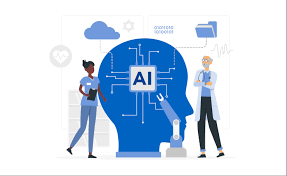The future of AI is in collaborating to build foundational models
By Susan Morse–At HIMSS24, the discussion around artificial intelligence has moved from excitement about the potential of AI to help solve healthcare’s biggest challenges to the desire for a solid foundation for its implementation.
On Wednesday, AI experts from three companies that are some of the biggest researchers and builders of AI spoke to a ballroom-filling audience during, “The Future of AI in Healthcare: Challenges Collaborations and Innovations.”
The use of AI raises questions beyond ones of regulation and risk.
For instance, in using genAI for clinical diagnosis, what constitutes truth, said Keith Dreyer, chief data science officer and chief imaging information officer at Mass General Brigham. If genAI makes one diagnosis based on a medical image, and then the radiologist comes in and disagrees, which one goes into the medical record?
“Do we create medical records like we used to?” Dreyer said. “For the first time, EHRs might be considered medical devices.”
In implementing AI, the first question healthcare organizations must ask is whether to build the technology themselves or have someone else do that, Dreyer said. Then there are the regulatory questions, followed by the governance process moving towards deployment, and then continuous monitoring to keep track of accuracy.
GenAI has yet to have the same guardrails in place. The process for Mass General Brigham researchers is to have that same governance in place, and at the same time allow innovation to happen, Dreyer said.
Bratin Saha, vice president for machine learning and AI at Amazon Web Services, said some customers want that initial infrastructure so they can concentrate on building. Others want to take a model and run with it.
3M is providing infrastructure. GE HealthCare is building AI models.
Parminder Bhatia, chief artificial intelligence officer at GE Healthcare said, “It is quite costly to build these technologies.”
Some 70 to 80% of the work is done first by cloud technologies, Bhatia said.
GenAI can leverage hyperscalers brought in from the cloud. These foundational models are tailor made for healthcare.
Healthcare leaders are thinking about AI as a decision-making tool. But it’s a great way to combine all of the data, especially the 90% that is not currently used, he said.
AI is leading to greater operational efficiency, Bhatia said. It’s reducing the length of hospital stays, and it predicts which beds will become free. Patients can spend less time getting tests. AI is like a copilot allowing physicians to see the patient across the disease state.
Mass General Brigham is investing in research to take the technology and try it in the clinical domain.
“I feel like over the next couple of years they’re going to be on steroids to take this technology and use it in certain domains,” Dreyer said. “I see that happening in a wide variety of places. It’s a lot of work, because a lot of the infrastructure isn’t there yet. We’re taking a responsible approach and doing this over a couple of years.”
Saha of AWS said the models are massive due to such a large amount of data. The models have a thousand times more information than the average human will use in a lifetime, and that scaling them will take a collaborative effort across companies such as AWS.
“Together we get to solve this problem,” Saha said.
Category: Uncategorized

